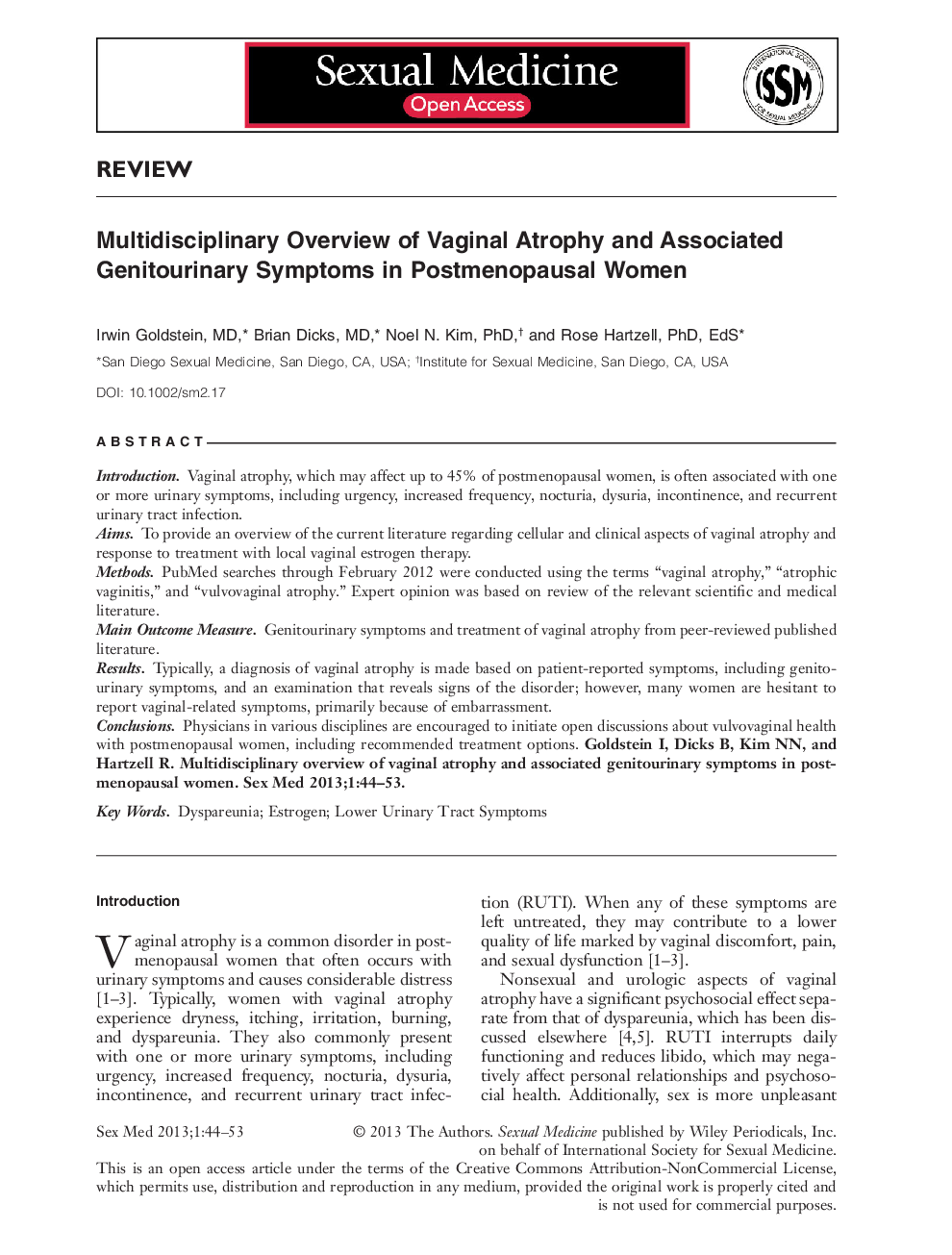| Article ID | Journal | Published Year | Pages | File Type |
|---|---|---|---|---|
| 4274622 | Sexual Medicine | 2013 | 10 Pages |
IntroductionVaginal atrophy, which may affect up to 45% of postmenopausal women, is often associated with one or more urinary symptoms, including urgency, increased frequency, nocturia, dysuria, incontinence, and recurrent urinary tract infection.AimsTo provide an overview of the current literature regarding cellular and clinical aspects of vaginal atrophy and response to treatment with local vaginal estrogen therapy.MethodsPubMed searches through February 2012 were conducted using the terms “vaginal atrophy,” “atrophic vaginitis,” and “vulvovaginal atrophy.” Expert opinion was based on review of the relevant scientific and medical literature.Main Outcome MeasureGenitourinary symptoms and treatment of vaginal atrophy from peer‐reviewed published literature.ResultsTypically, a diagnosis of vaginal atrophy is made based on patient‐reported symptoms, including genitourinary symptoms, and an examination that reveals signs of the disorder; however, many women are hesitant to report vaginal‐related symptoms, primarily because of embarrassment.ConclusionsPhysicians in various disciplines are encouraged to initiate open discussions about vulvovaginal health with postmenopausal women, including recommended treatment options. Goldstein I, Dicks B, Kim NN, and Hartzell R. Multidisciplinary overview of vaginal atrophy and associated genitourinary symptoms in postmenopausal women. Sex Med 2013;1:44–53.
